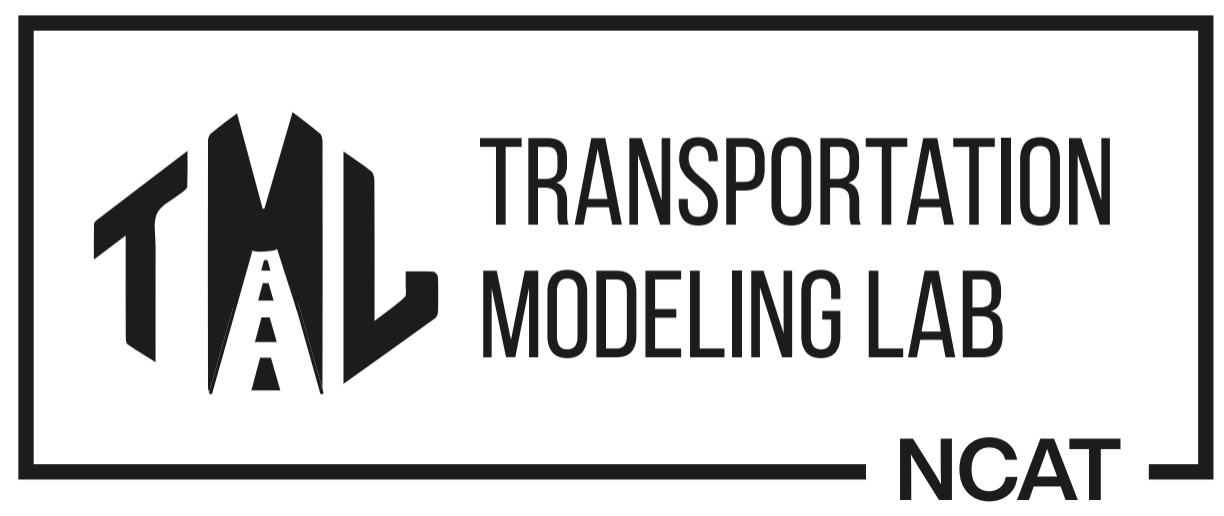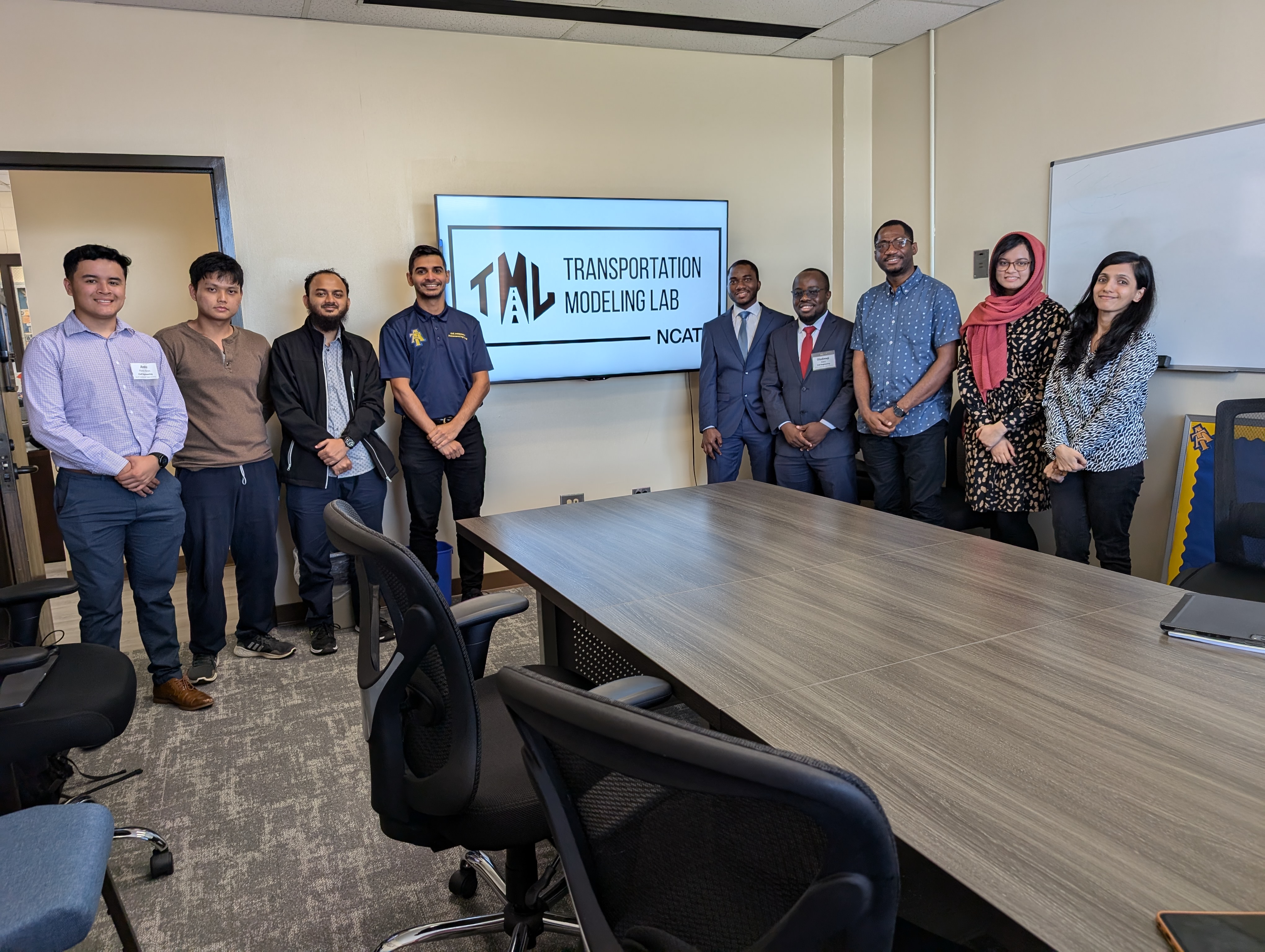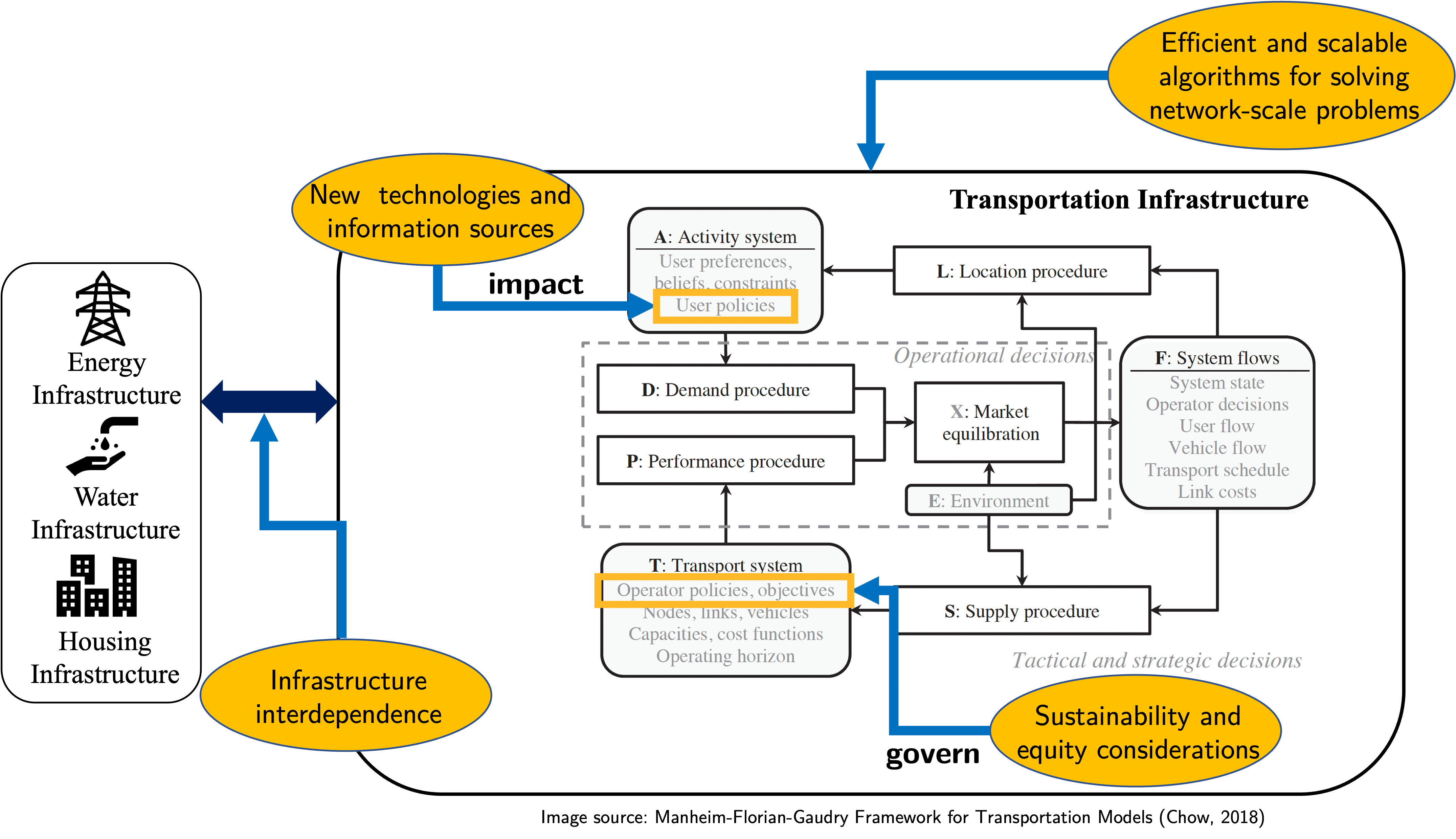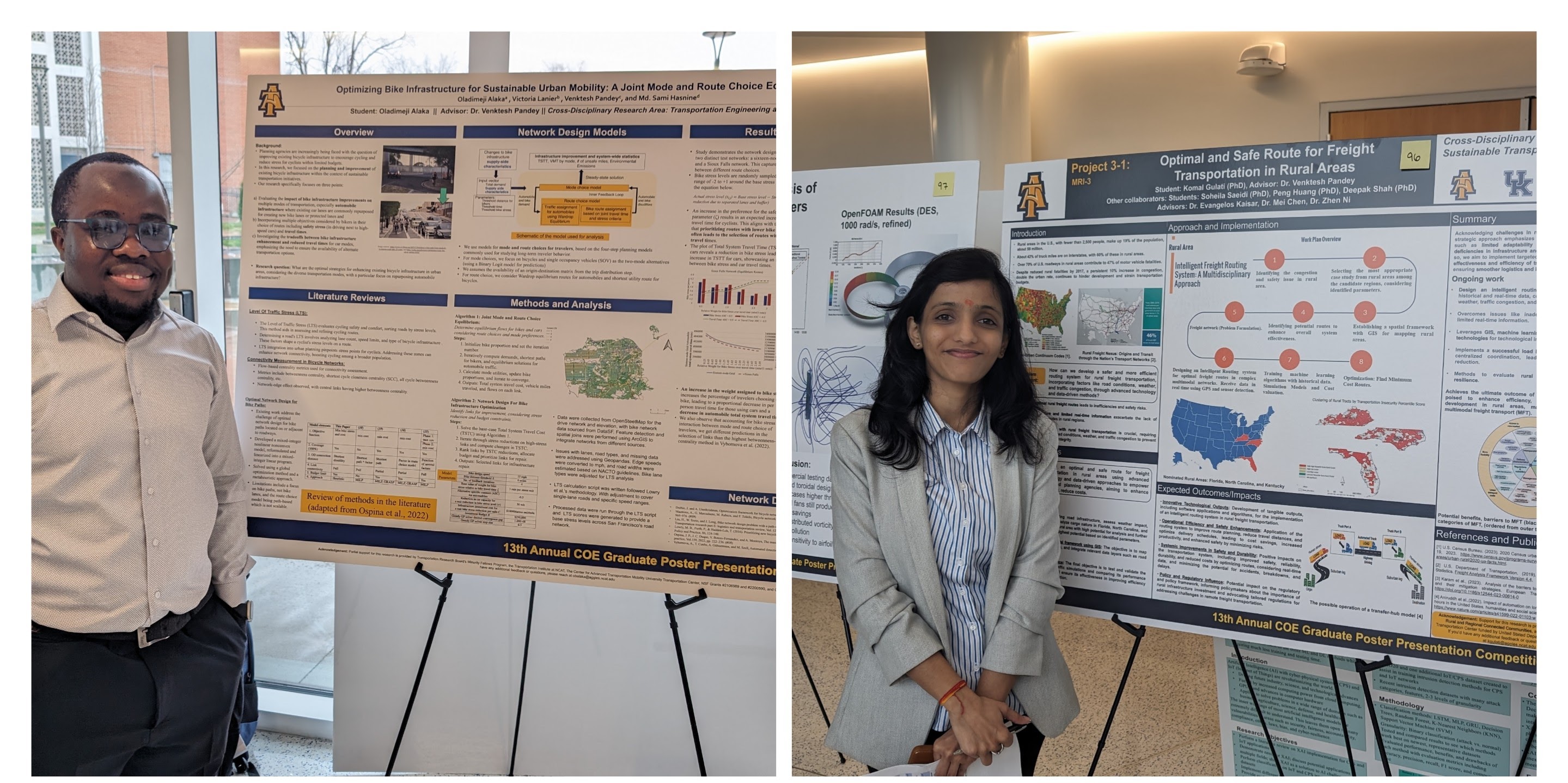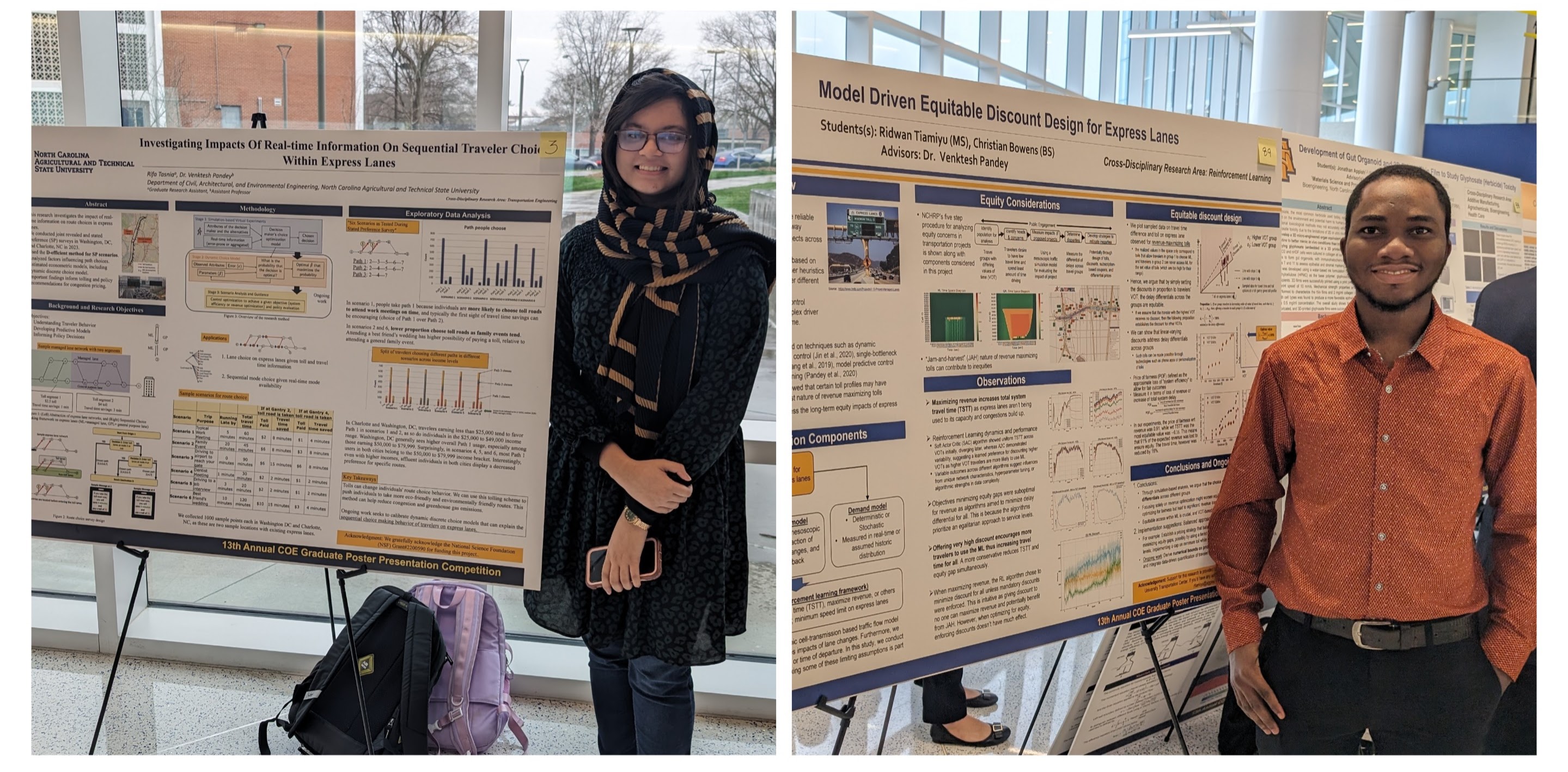Welcome to the Transportation Modeling Lab (TML) at North Carolina Agricultural and Technical State University.
Lab Vision
Harnessing emerging technologies and mobility services to create safe, accessible, efficient, and resilient transportation solutions that empower communities and improve the movement of people and goods.
Core Research Areas
The Transportation Modeling Lab integrates intelligent transportation systems (ITS) and emerging future mobility services in traffic operations and transportation planning models for the long-term future. Our areas of interest include:
- Modeling accessibility in design and delivery of future transportation systems
- Developing efficient computational algorithms to solve current transportation and logistics problems with innovative integration of foundational transportation principles
- Transportation planning and operations in the era of real-time information and mobility-as-a-service (such as express lanes, parking search, real-time logistics, and ridesharing)
- Interpretable, multiobjective stochastic control of intelligent transportation services and autonomous systems using data-driven algorithms
- Smart cities and integrated infrastructure models using networks theory
Keywords: network modeling, congestion pricing, accessibility, reinforcement learning, adaptive routing, and shared mobility.
